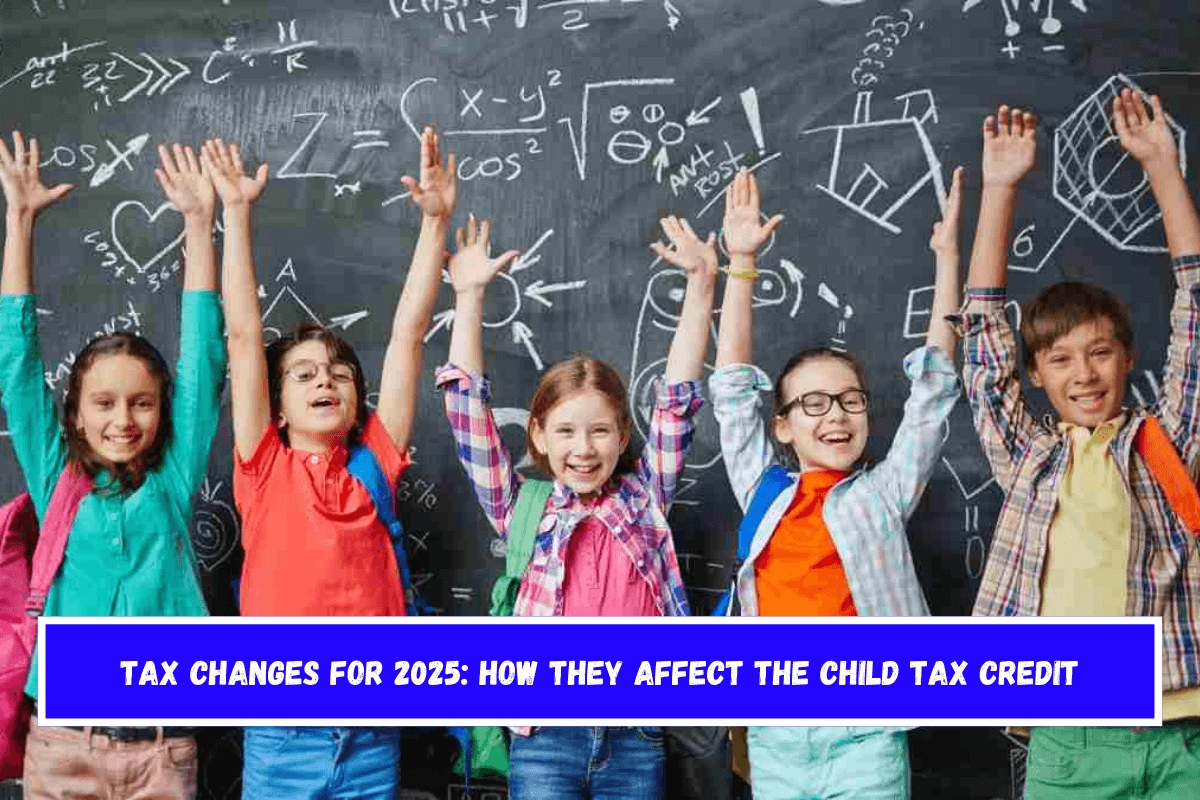The IRS recently announced changes to taxes that will take effect in 2025. These changes are likely to have an effect on the tax obligations of many families across the country. Key tax benefits like the Child Tax Credit and the Earned Income Tax Credit (EITC) have been changed, and there are also other changes that are needed to account for inflation.
The goal of these changes is to make them more in line with the real world of the economy and help many people with their money problems. However, there are some important things to know, especially about who is eligible and how much they can get.
The IRS has confirmed that the Child Tax Credit will stay mostly the same in 2025, even though some income limits and benefits have changed. At the very least, these changes are meant to help families deal with rising costs in an inflationary climate.
The child tax credit in 2025
One of the great things that families with kids under 17 are looking forward to is the Child Tax Credit. This credit will stay the same in 2025 as it was in 2024. This means that parents can claim up to $2,000 for each kid who qualifies. For families, up to $1,700 of this amount is refunded, which means they can get it even if they don’t owe any federal income tax.
Families must have an adjusted gross income (AGI) of less than $400,000 if they file jointly or less than $200,000 if they file as an individual in order to get the full credit. This makes sure that the credit is aimed at middle-income families and that families with higher incomes will eventually be able to get less of it.
There is also evidence from the IRS that the refunded part of the Child Tax Credit is meant to help low-income families by giving them money even when they don’t owe any taxes. For families where both parents make less than average wages, this can be especially helpful because it helps lower the costs of having children, which can otherwise put a strain on family finances.
Changes to income tax credits
The Earned Income Tax Credit (EITC), a benefit for low- and moderate-income families, will be one of the most important changes for 2025. This credit not only lowers the tax you have to pay, but it also often gives you a return. Due to rising prices, the IRS has raised the highest amounts that can be claimed under the EITC. This makes sure that the credit continues to be a useful way for qualifying households to get help.
The most an EITC family with three or more kids can get will go up from $7,830 in 2024 to $8,046 in 2025. Family with two kids can get up to $7,152, and family with one kid can get up to $4,328. Even taxpayers who don’t have kids will gain because they can claim up to $649, which is more than they could before.
Families must make a certain amount of money to be eligible for the EITC. For the credit to be given in 2025, married couples with three or more children must have an AGI below $68,675. For the same number of children, single filers, heads of households, or orphans must have an AGI below $61,555.
The EITC is only given to people who really need it, and these limits make sure that it helps working families who may be having a hard time meeting their tax responsibilities.
The rise in the EITC is especially important because it is one of the main ways the government helps families with low incomes. Working families get a lot of direct help from this credit.
It has a direct effect on their financial well-being, especially during years when inflation makes money worth less. Because the maximum credit has been raised, families that are qualified will get more money, which will help pay for things like housing, child care, and transportation.

Other important tax adjustments for 2025
There are more changes to taxes in 2025 than just the Child Tax Credit and the EITC. For the same reason, the IRS has also changed the tax rates on long-term capital gains and income tax bands. The gift and estate tax allowance has also been raised, which means that people can give their heirs more money without having to pay more taxes.
As a normal measure of inflation, the IRS makes changes like these so that taxpayers don’t owe more just because their wages have gone up in real terms. This means that even though wages may go up with inflation, it doesn’t always mean that people can buy more with their money. The IRS wants to make sure that Americans aren’t penalized for this.
For example, in 2025, higher income brackets will let people make more before moving up to the next tax bracket. This could mean that many families pay less in taxes. This is especially important for people who got raises or bonuses that put them in a higher tax rate.
The tax rates on long-term capital gains have also been changed. These rates apply to the sale of assets that have been kept for more than a year. People who are going to sell investments or other assets need to know about these new thresholds because they may be able to lower the amount of taxes they have to pay on the money they make.
Also See:- Honda pulls back over 700,000 vehicles due to fuel leak issue: Check the list of impacted cars













Leave a Reply